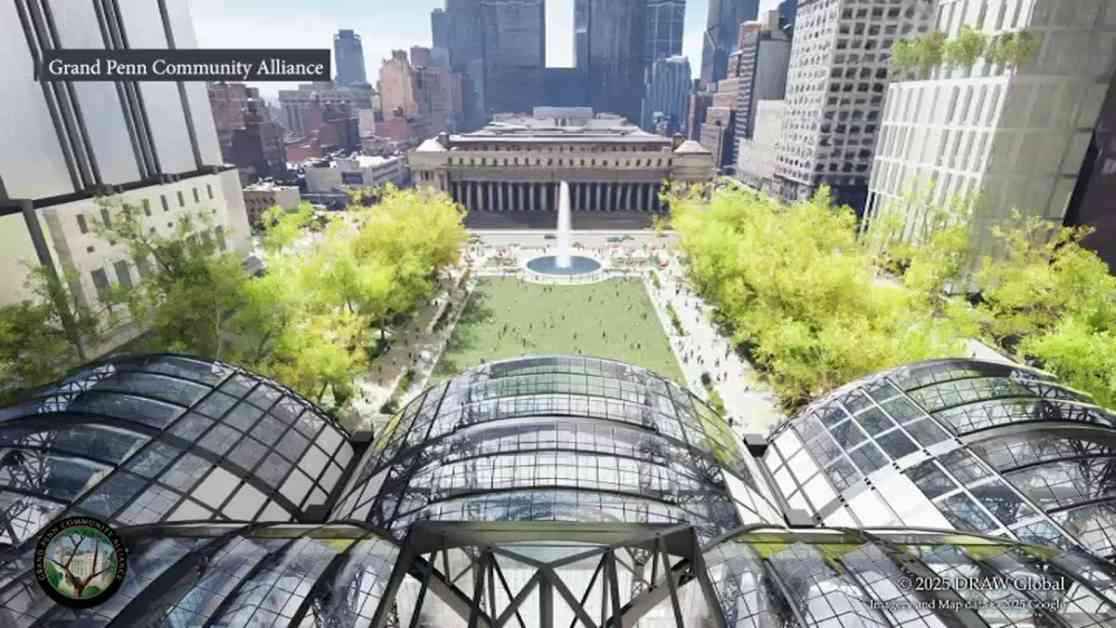Grand Penn: A Vision for New York’s Future
Penn Station, a transit hub that has long been criticized for its outdated infrastructure and congested layout, may be in for a major transformation. Imagine a new name, a new look, and a whole new identity: Grand Penn. The proposed redesign of this iconic station has caught the attention of New Yorkers and urban planners alike, sparking both excitement and skepticism about its potential impact on the city’s landscape.
The visionary behind this ambitious project is Alex Washburn, the lead architect for the Grand Penn redevelopment. Washburn and his team have spent three years meticulously crafting a plan that aims to revolutionize the transit experience in New York City. At the heart of their proposal is a bold move: relocating Madison Square Garden from Eighth Avenue to Seventh Avenue, a shift that could redefine the very essence of the city’s iconic skyline.
“This could be the biggest deal in New York in a century,” declared Washburn, exuding confidence in the transformative power of the Grand Penn project. The relocation of MSG could offer the famous arena a fresh start while opening up new possibilities for development in the heart of Manhattan. Washburn envisions a win-win scenario, where both the Garden and the city stand to benefit from this groundbreaking initiative.
However, not everyone is convinced of the merits of the Grand Penn plan. Samuel Turvey, a vocal advocate from Rethink New York, raises concerns about the transit implications of the proposed redesign. He argues that the focus should be on extending tracks to enable seamless connectivity between New Jersey and Long Island, a move that could have far-reaching implications for the region’s transportation system.
Amtrak, the entity that owns the tracks beneath Penn Station, also weighs in on the debate. Jason Abrams, an Amtrak spokesman, emphasizes the importance of evaluating all options to meet the diverse transportation needs of the region. With over 600,000 commuters passing through the station daily, the stakes are high for ensuring that any redevelopment plan aligns with the broader goals of enhancing transit connectivity in the city.
One key player yet to voice their opinion is Vornado, a real estate giant that was promised multiple office towers as part of the initial redevelopment plan. The Trump administration also holds a significant stake in the parcel of land where Penn Station stands, adding another layer of complexity to the project. Washburn sees this as an opportunity for President Trump to showcase his deal-making skills and bring the Grand Penn vision to life, decades after the original station was demolished.
As the debate over the future of Penn Station unfolds, Governor Kathy Hochul’s office remains steadfast in their commitment to revitalizing this pivotal transit hub. Their plan, anchored by new residential developments, improved transit access, and enhanced infrastructure, aims to create a vibrant urban hub that reflects the dynamic spirit of New York City. With diverse stakeholders and competing interests in play, the fate of Grand Penn hangs in the balance, awaiting a resolution that will shape the city’s future for generations to come.


